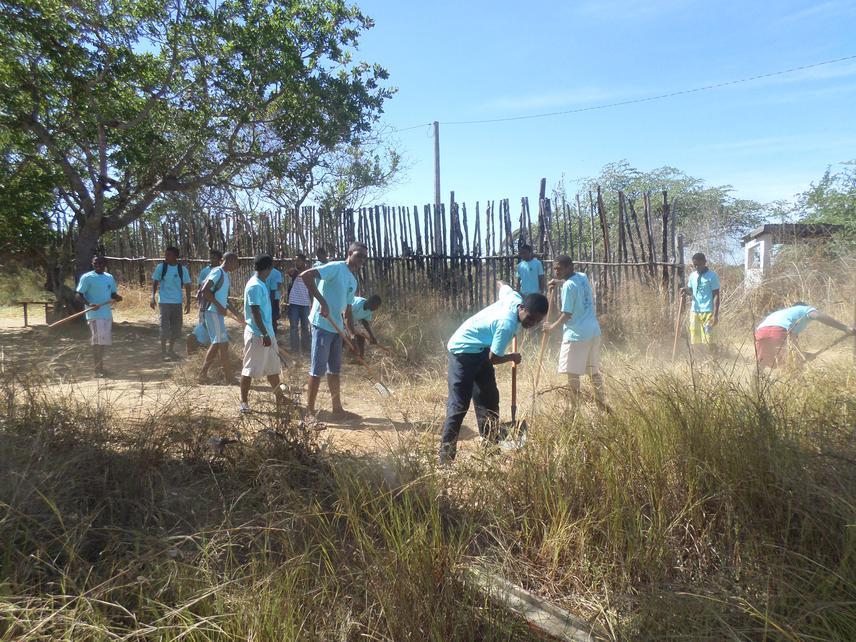Sylviane Volampeno
Other projects
27 May 2015
Advancing the Conservation of the Blue-Eyed Black Lemur: Research, Awareness Raising and Development of Alternative Livelihoods
3 May 2018
Conservation of Threatened Lemurs in Andilambologno Forest, Western Madagascar: Biological Research, Habitat Restoration and Community Outreach
This project aims to full assess the population size and habitat extent and quality of the blue-eyed black lemur throughout its range. It will also aim to gain local support for the local conservation by implementing an education and awareness programme and build the capacity of two target communities to aid environmental law enforcement by establishing an effective patrolling and reporting system for the protected area.

Cleanup day in Antsohihy city with the students from the public high school Primary School teachers wearing the T-shirt and bringing poster and handbook.
The distribution of the blue-eyed black lemur is very restricted, occurring in the north-western forests of Madagascar and the Sahamalaza-Iles Radama National Park (SIRNP) is its main habitat. The forest of the SIRNP is severely fragmented, comprising blocks of forest including Ankarafa, Anabohazo and Analavory. Because of the presence of the NGO AEECL’research station in the Ankarafa Forest most of the recent studies on the blue-eyed black lemur and its habitat have been conducted in this forest.
No surveys of the blue-eyed black lemur populations or assessments of habitat extent and quality have yet been carried out in the Anabohazo or in the Analavory Forest. Assessing the blue-eyed black lemur populations across the entire forested area of the SIRNP will allow updating population size estimates and model future population development, crucial prerequisites to effective conservation measures ensuring the survival of this lemur species.
The blue-eyed black lemur is primarily threatened by habitat destruction due to slash-and-burn agriculture, logging and uncontrolled fires. Due to these anthropogenic threats, the species was red-listed as Critically Endangered and has also been listed among the world's 25 most endangered primates since 2008. Although the area is protected, local communities are still practicing illegal forest exploitation within the Pak for their basic and business needs. Therefore it is important to appoint them as conservation agents and to train in appropriate monitoring techniques to ensure compliance with park regulations. The local communities surrounding the SIRNP, one of the least-developed and most deprived rural areas of Madagascar is often unaware of the consequences of degrading and depleting their natural resources. Developing an environmental education program and conservation activities for the local communities living in the periphery of the protected area will increase awareness of the necessity of conserving the forests and its biodiversity.